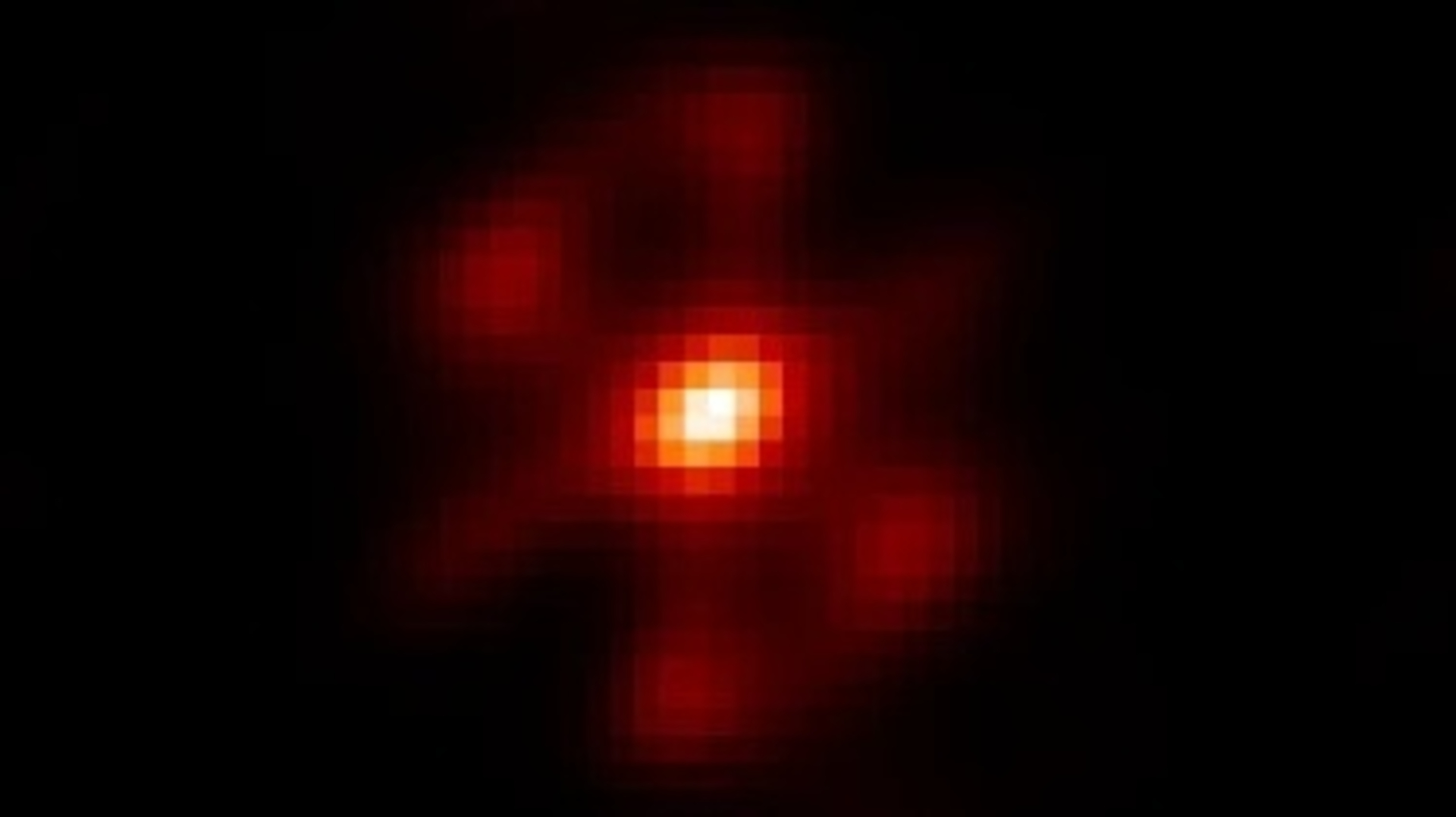Meet the 10 asteroids NASA's Lucy spacecraft will visit
The Trojan space rocks aren't quite like those found in the main asteroid belt.
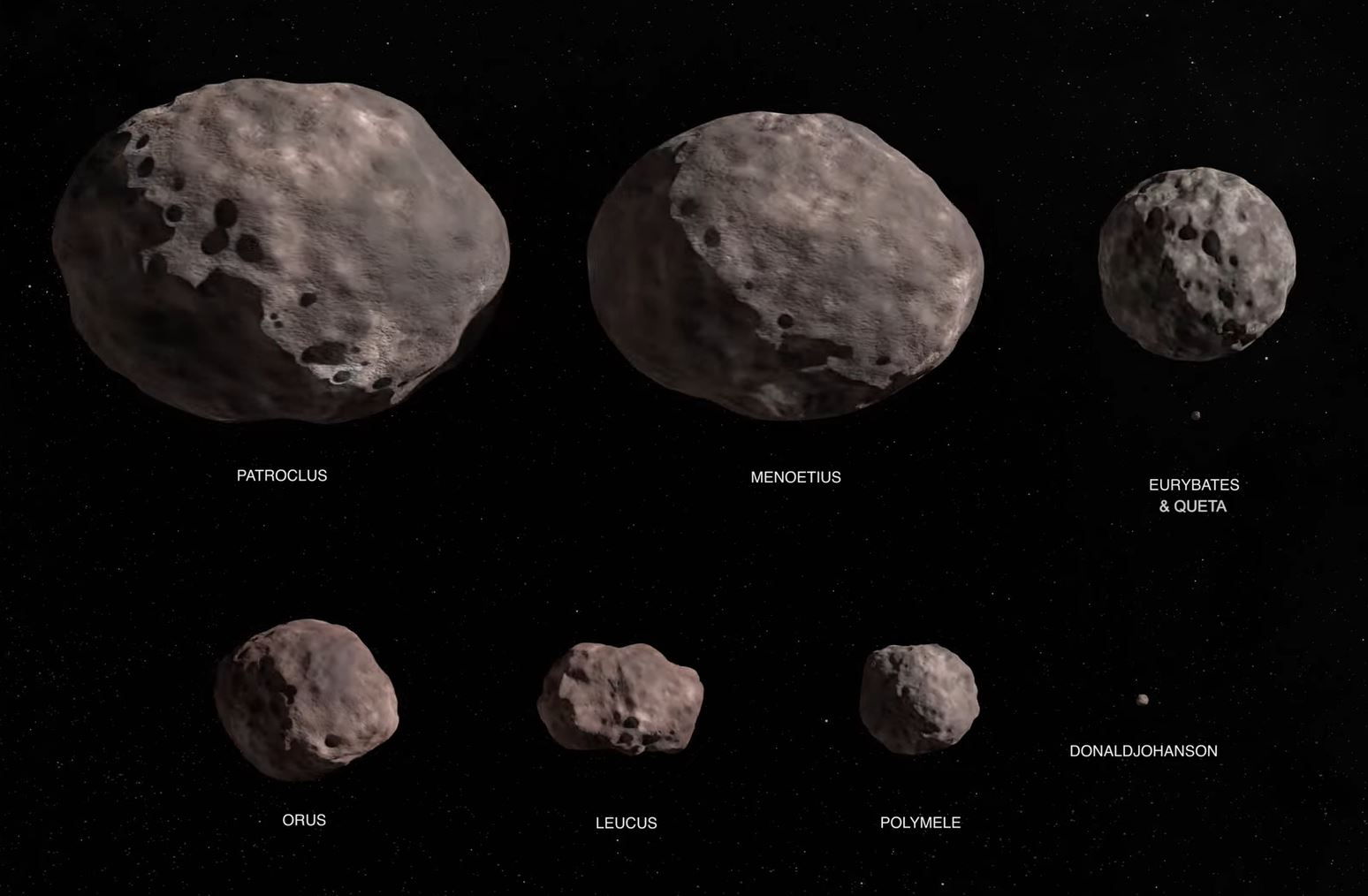
The solar system is populated with asteroids as different as our planets. The main asteroid belt, located between the orbits of Mars and Jupiter, is home to many different types of space rocks. But a new mission called Lucy will soon launch to study a group of asteroids that has yet to be studied up close: the Trojans.
The Trojans aren't quite like the rocks found in the asteroid belt. They are all remnants from the formation of the solar system. But whereas the asteroid belt rocks have a big range of reflectiveness, or albedo, the Trojans tend to be mostly non-reflective rocks. Trojans also differ in that they orbit farther away from the sun, near Jupiter's orbit.
NASA's Lucy mission launched on Oct. 16, 2021, to study these unique space rocks. The mission will be powered by solar panels and is equipped with four instruments that can observe the temperature, albedo and surface features of the asteroids it will visit. Lucy is scheduled to fly past 10 asteroids: two main-belt rocks and eight Trojans. Learn more about each of these targets in this countdown!

The Lucy spacecraft looks a bit like the face of a bushbaby, a tree-dwelling primate with big eyes. To have the energy to reach its many destinations, Lucy is traveling with two large peeper-shaped solar panels that are each almost 24 feet (7 meters) in diameter. Nestled in between these two panels is the relatively small instrument pointing platform (IPP), which carries Lucy's four instruments.
Two instruments — a visible color imager called the Multispectral Visible Imaging Camera (MVIC) and an infrared spectrometer called the Linear Etalon Imaging Spectral Array (LEISA) — are collectively known as L'Ralph. They will help scientists to figure out the Trojans' compositions. The Long Range Reconnaissance Imager (L'LORRI) will capture high-resolution images of the rocks. The final instrument is Lucy's Thermal Emission Spectrometer (L'TES) which will act like a remote thermometer to measure the radiation each rock emits. Lucy also carries a 6.5 foot (2 m) high-gain antenna to communicate back to Earth.
Lucy's instruments will need to be in top shape because the mission is zooming past all of its targets at about 3.7 to 4.3 miles (6 to 7 kilometers) per second.
Lucy will be managed by NASA's Goddard Space Flight Center in Greenbelt, Maryland and it was built by Lockheed Martin Space Systems in Denver, Colorado. Lucy launched in October 2021 on a United Launch Alliance Atlas V rocket and will reach the first of its Trojan targets in 2027. The mission cost about $981 million.
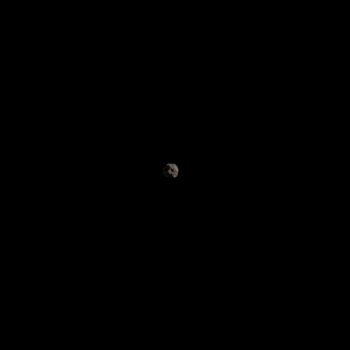
First up are two main-belt asteroid targets.
Lucy's very first target was the last addition to the mission's itinerary, making the list in January 2023. Asteroid 1999 VD57, which the Lucy team has nicknamed Dinkinesh in honor of the Ethiopian name for the Lucy fossil, is a stony asteroid and perhaps 2,300 feet (700 m) wide. Lucy will fly past on Nov. 1, 2023, in a test of the spacecraft's target-tracking system.
Next is Donaldjohanson. This 2.5-mile-wide (4 km) asteroid belt dweller will be a test rehearsal for the mission's instruments. Astronomers hypothesize that this dim and tiny object may be a fragment of an ancient collision that produced a family of asteroids the largest of which is called Erigone. Known as a C-type asteroid, which means it's likely rich in carbon, Donaldjohanson has similar properties to the rocks that NASA's OSIRIS-REx and Japan's Hayabusa2 asteroid-sampling missions have studied. Lucy is scheduled to fly by this asteroid on April 20, 2025.
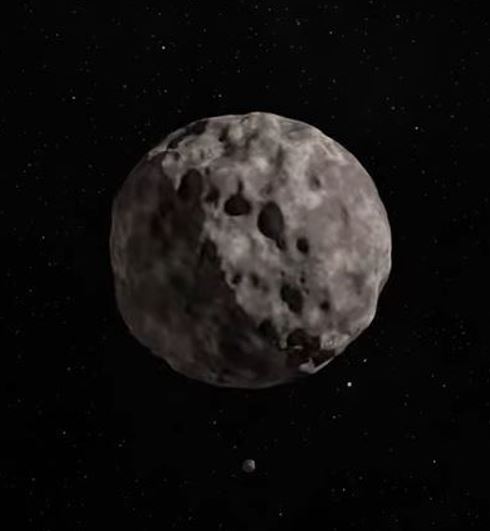
Eurybates and its tiny companion Queta will be Lucy's next targets. They are the first Trojan rocks that Lucy will visit, with a flyby scheduled for Aug. 12, 2027.
Eurybates is significantly bigger than Donaldjohanson; the large Trojan has a diameter of about 40 miles (64 km). Eurybates will serve as a good starting point for the mission specialists wanting a solid introduction to the Trojans. Astronomers think the asteroid is the largest remaining chunk of a massive collision. In addition, this C-type asteroid is a bit of an oddball among the Trojans because C-type asteroids are usually found in the main asteroid belt. Its presence in the Trojan cluster is another mystery scientists hope to answer with Lucy.
A look at Hubble Space Telescope data taken in 2019 revealed the existence of a tiny natural satellite now dubbed Queta. It is estimated to be just about half a mile (1 km) in size. There are only a handful of known cases where Trojan asteroids have a companion.
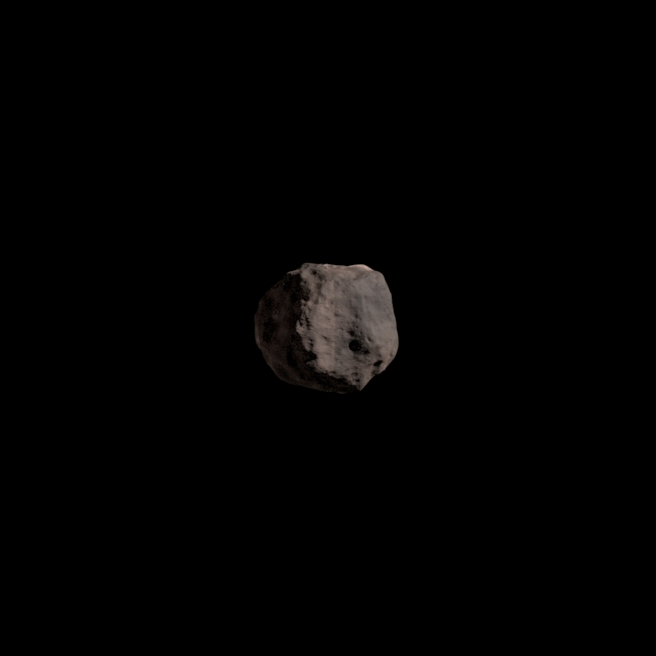
Lucy's third stop will take place about a month later, at the asteroid Polymele. This is the first time that Lucy will encounter a P-type asteroid, a class known for having a reddish color and thought to be made up of organic elements.
Polymele is 13 miles (21 km) in diameter; Lucy will visit it on Sept. 15, 2027. Lucy will encounter another set of P-type asteroids later in its mission, but the others will be much larger, which will offer scientists an intriguing comparison.
In March 2022, less than six months after Lucy's launch, the team discovered a small moon orbiting Polymele. The rock, which the team has nicknamed Shawn, is perhaps 3 miles (5 km) wide.

Lucy's next target is Leucus, a 25-mile-wide (40 km) asteroid. It is a D-type asteroid, a variety which is also thought to be composed of organic elements.
Leucus rotates very slowly, taking about 446 hours to make one revolution. Lucy will determine whether this slow rotation makes the day side of the asteroid significantly hotter than its night side. Scientists think Leucus is elongated because its brightness also varies a lot. Lucy is scheduled to visit Leucus on April 18, 2028.
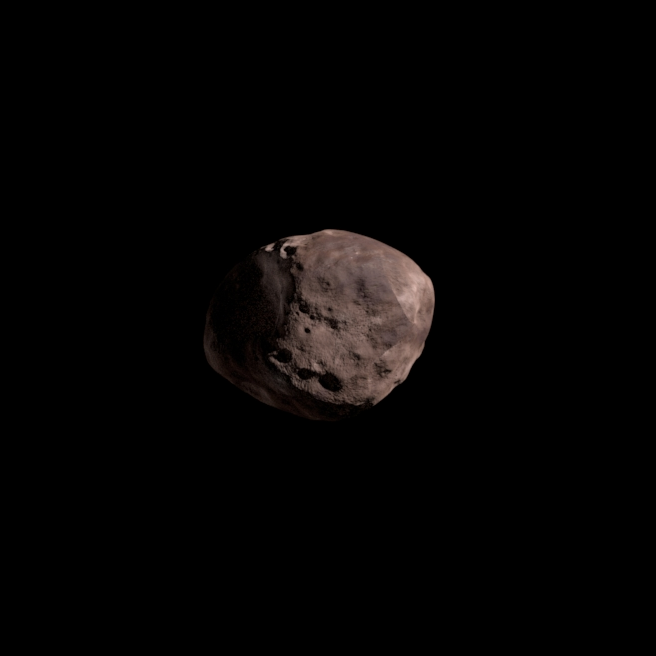
A little more than half an Earth year later, Lucy will visit Orus. Also a D-type rock, Orus has a deep red color. Orus has a diameter of 32 miles (51 km) and it is about the size of Eurybates. Comparing these two objects, similar except for their colors, acts as the backbone of the Lucy mission.
Orus is the last of the L4 swarm that Lucy will visit. The "L" in this category name refers to Lagrange point, which are places throughout the solar system where gravity is stable. The Lagrange points near Jupiter have kept the Trojans in place for billions of years. Lucy will be studying two swarms of Trojan asteroids that have gathered at distinct Lagrange points, the L4 point ahead of Jupiter and the L5 point behind it.
Once Lucy leaves Orus following its Nov. 11, 2028, visit, the spacecraft will leave the L4 swarm and dip back into the inner solar system to conduct a flyby of Earth.

Five years after flying by Orus, Lucy will speed past two asteroids in the L5 swarm, which are trailing Jupiter in its orbit around the sun.
Patroclus (left) and Menoetius (right) make up a fairly evenly matched binary pair of asteroids, which is a rare phenomenon in the inner solar system. These organic-rich P-type Trojans are large: Patroclus is 70 miles wide (113 km) and Menoetius is slightly smaller with a diameter of 65 miles (104 km).
Lucy mission specialists look forward to this encounter because they hope that the duo are nearly pristine examples of what the planets formed from. And it was pure good luck that Lucy can visit it: this pair orbits in a highly-inclined orbit relative to the solar system plane. Fortunately, Lucy will be passing in their neighborhood when the two asteroids aren't too high above or too far below the spacecraft for it to observe them. This flyby will take place on March 3, 2033.
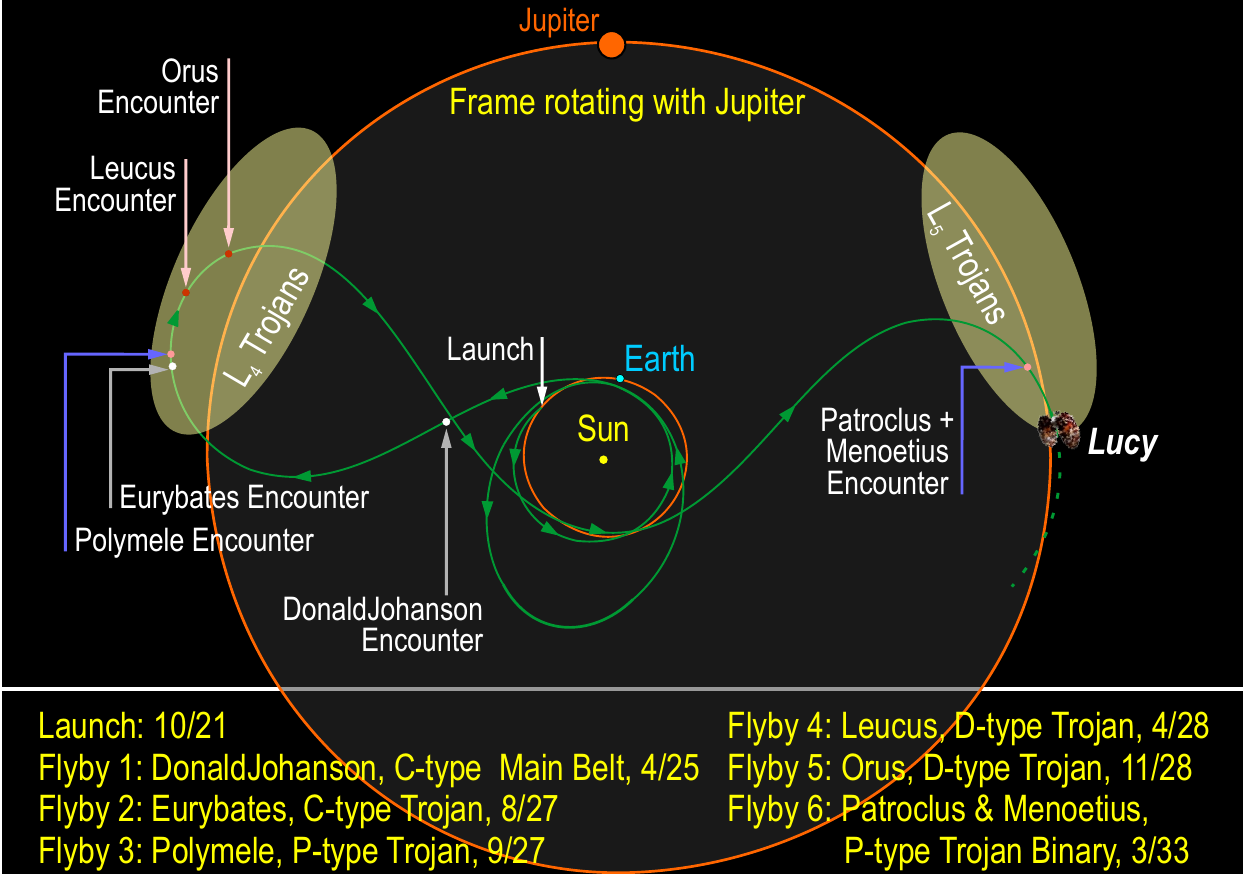
Lucy will take a remarkable journey throughout the solar system to visit a plethora of asteroids that could teach scientists so much more about the origins of the solar system.
Its winding trip to its multiple destinations, which this chart is showing as flowing to the left then to the right, begins with two loops around Earth before it swings out towards Donaldjohanson. This space rock is named after the American paleoanthropologist who found the remains of the bipedal hominin Lucy.
At the time of Lucy's discovery in 1974, the finding was the oldest and most complete human ancestor ever known. NASA's new mission gets its name from the hominin, inspired after the developments in that field of science of which Lucy helped pave the way.
By winding through the solar system to study two asteroid neighborhoods around Jupiter, astronomers hope the mission's years of travels will set the groundwork for a new perspective on our cosmic home.
Follow Doris Elin Urrutia on Twitter @salazar_elin. Follow us on Twitter @Spacedotcom and on Facebook.

Doris is a science journalist and Space.com contributor. She received a B.A. in Sociology and Communications at Fordham University in New York City. Her first work was published in collaboration with London Mining Network, where her love of science writing was born. Her passion for astronomy started as a kid when she helped her sister build a model solar system in the Bronx. She got her first shot at astronomy writing as a Space.com editorial intern and continues to write about all things cosmic for the website. Doris has also written about microscopic plant life for Scientific American’s website and about whale calls for their print magazine. She has also written about ancient humans for Inverse, with stories ranging from how to recreate Pompeii’s cuisine to how to map the Polynesian expansion through genomics. She currently shares her home with two rabbits. Follow her on twitter at @salazar_elin.
